This account of the siege of Częstochowa is based on the Memoirs of the Siege of Czestochowa by Father Augustine Kordecki (Pamietnik oblezenia Częstochowy, edited and with a preface by Jan Tokarski, London, Veritas, 1956.) Written by Friar Kordecki in response to a wish of King Casimir, these memoirs were originally published in Latin in 1658. The analysis and subtitles are by Prof. Plinio Correa de Oliveira.
Jasna Góra
“When God the most High decided to chastise the Poles, in His goodness He first sent various signs warning of the catastrophe which approached.”
So He permitted that, the 10th of February 1654, the high tower of the Sanctuary of Czestochowa be struck by lighting and consumed by fire.
In that same year, on the 9th of July, everyone saw a miracle which occurred in the face of the sun: “In the nose of the sun there appeared a cross, which gradually became transformed into a heart, this latter pierced by a sword moved to one side and halted at the position of an eye. In the place of the other eye, one saw a hand holding a mace, which moved toward the forehead, dividing into four parts, and then on reaching the rim of the solar disk, became a scourge”(pg. 97).
“The following year God’s scourge against the Poles, Charles X Gustav, king of the Swedes, set out from the north.”
This king was one of the most outstanding generals of his time and one of the most ferocious of the Protestant leaders.
Carl X Gustav, King of Sweden Painting by Abraham Wuchters
I. THE SIEGE: PHASE BEFORE THE ATTACK
THE EMPLOYMENT OF THE FEAR—
SYMPATHY BINOMIAL PREDOMINATES
The Swedes easily took the whole country, almost without resistance. Practically all the nobility, part of which was Calvinist, accepted Charles X Gustav as “Protector of the Polish Crown,” abandoning King John II Casmir to his own fate. After conquering Krakow in the far south, they sent, on orders of the Swedish King, an army of three or four thousand men to take the fortress – sanctuary of Czestochowa, about 125 miles from there.
1. A “third force Catholic”* uses the fear-sympathy binomial for the first time
Going ahead of the enemy, Count Jan Wejchard of Wrzeszczewicz, in order to gain the good graces of the king of the heretics, demands of the Pauline Friars that they hand over the fortress of Jasna Gora to him, a Catholic, to avoid its falling directly into the hands of the Swedes. He threatened to take the sanctuary by force, if the did not heed his demand. The monks headed by their Friar Augustine Kordecki tried to dissuade the count from his vile pretension and refused his proposal.
Portrait of King John II Casimir in a chainmail.
2. An authentic Catholic reacts
Meanwhile, some nobles, fleeing before the Swedish advance, sought refuge in Jasna Gora. One of them, Stephan Zamoyski, counseled the religious not to give in to the enemy, and affirmed that those who sought refuge there were prepared to die in defense of the holy place, confiding themselves to the protection of Our Lady.
3. The first refusal of the monks, in the face of the fear-sympathy binomial
The Count of Wrzeszczewicz, however, did not give up his plan, and sent an ultimatum to the Prior, demanding openly that Jasna Gora yield to the Swedish King and swear submission and loyalty to the usurper, and that the religious promise to denounce to him any uprisings which they may hear of in the future.
The monks respond immediately, through their prior: “It is better to die worthily, than to live impiously.” (pg. 103)
Jasna Góra Monastery. X: The Basilica; h: The Arsenal; d: Monastery. M, D, A, B are all Gates.
4. The “third force Catholic” shows himself to be a traitor
Since the treasonous Count did not have the means to conquer Jasna Gora by arms, he attacked and damaged some properties of the monastery, and hastened to meet General Miller, who was moving his troops not far away. Enticing him with the treasures of the shrine, he managed to convince him to attack Jasna Gora right away.
The prior, calling together the council of the monastery, communicated to the religious his decision not to hand the holy place over to the heretics, and to resist with all disposable resources. His decision was unanimously approved.
Jasna Góra Monastery
5. Mass defections in Poland; only the monastery resists
Meanwhile, King John II Casmir took refuge in the neighboring principality of Opole, in Silesia, where he would try to reunite the remnants of the army of Poland. But he could not give any assistance to Jasna Gora. Many nobles, on the other hand “satisfied” with the promises of peace and security made by the Swedes, began to return to their properties.
But Stanislaw Warszycki, noble lord of the Castle of Krakow and First Senator of the Crown, sent provisions and 12 cannons at that moment as his contribution to help in the defense of Jasna Gora.
6. Second use of the fear-sympathy binomial
Now came reports that General Miller, with an army of three or four thousand men and nineteen heavy guns, plus some supporting bands from the Count of Wrzeszczewicz, Waklaw Sadowski and the Prince of Saxony, were setting out from Weilun toward Czestochowa, where he should arrive on the eighteenth.
Then there was no lack of “prudent” advice for the Father Prior. So, the Prior of the convent of Wielun, “taking into account the disparity of the military forces,” advised Father Kordecki not to resist, thus sparing Jasna Gora from material damage. This had its influence on the defenders whose character was weaker.
“The monastery answers by the mouth of its cannons” Father Kordecki at the cannons.
7. Second refusal of Father Kordecki the monastery prepares for every eventuality
But Friar Kordecki did not count on material resources alone. He encouraged all to offer their lives in defense of the honor of the holy place, and to place all their hopes in the Blessed Virgin, “who in such an extreme necessity would not fail them with her help.” He asked them all to assist at the Mass which he would pray before the altar of the Image of Our Lady of Czestochowa. He ordered that the Blessed Sacrament be carried in procession along the walls and bastions. He blessed the cannons, one by one, the cannon balls, the bullets, and the barrels of powder.
Fr. Augustyn Kordecki, the Prior of Jasna Góra Monastery
8. “The monastery answers by the mouth of its cannons”: the struggle begins
Meanwhile, the Swedes reached the foot of Jasna Gora. It was two o’clock in the afternoon. General Miller sent a written peace proposal with a delegation, proposing the peaceful capitulation of Jasna Gora, to avoid “unnecessary bloodshed”… The declared adversary also pretended to be merciful.
The enemy troops had already taken up positions for the siege of the walls, and were studying the positions of the cannons of the fortress.
“It did not seem fitting to answer that letter in writing,” reported Fr. Kordecki. “It was no longer the hour to write, but to take up arms… We answered by the muzzles of our cannons…” (pg. 109).
The answer was so convincing, that, at nightfall, Miller had to beg for a truce, and he took advantage of the occasion to assure the friars that he did not want to do any damage to the sanctuary.
Since the Swedish troops had occupied granaries belonging to the convent and located outside the walls, the defenders bombarded them at night with incendiary projectiles, so that they could not be used to supply the enemy.
The following day, Miller hid his artillery in the nearby village of Czestochowa, whence he bombarded Jasna Gora. When the religious realized this, they considered that the destruction of the village was of no importance in comparison with the defense of the sanctuary of Our Lady, and, directing their artillery in that direction, they set the thatched houses on fire. Many of the Swedes in their surprise ran out into the open where they were brought under the fire of the monastery’s defenders.
9. The fourth attempt to apply the binomial; Friar Kordecki rejects it
Then, Miller sent another delegate to convince the Pauline Friars to accept the peace, by showing them that the resistance of Jasna Gora was unreasonable, in view of the fact that the whole country had already surrendered.
10. The fifth attempt to use the binomial; Friar Kordecki remains defiant
The commandant of the heretics sent a new message requesting capitulation, for Charles X Gustav had ordered him to take the fortress of Czestochowa. It was nighttime, and since the following day was Sunday and a Feast of Our Lady, there were various ceremonies for the occasion, among them a procession with the Blessed Sacrament, inside the walls. In view of this, the Swedes had to wait until midday for their answer, which was moreover negative.
II. THE BATTLE
Infuriated, the Protestants concentrated a three day attack on Jasna Gora, launching grenades and incendiary projectiles, trying to set fire to the installations of the monastery and the sanctuary. By night they dug trenches leading toward the walls.
1. Amidst the cannons’ roar, a hymn from the tower.

Infuriated, the Protestants carried out a three-day attack on Jasna Gora
At a certain moment, in the midst of the noise of the bombardment, a pious and sacral hymn was heard, coming from the height of the tower of the sanctuary, and giving new heart to the defenders. From then on, it became customary to hear everyday, in the midst of the fight, the hymns which emanated from the solid and majestic tower. At this, the Swedes became even more infuriated, for they saw it as a manifestation of contempt for them.
Firefighting equipment was distributed near the bases of the roofs to combat the incendiary bombs launched by the enemy. Some of them bounced off the roofs and fell outside the walls. A bomb, hurled against the chapel where the miraculous picture of Our Lady of Czestochowa is found, “turned back toward the enemy camp, as if it had been touched by an invisible force, spreading a terrible fire through the air” (pg. 118).
2. A “Commando” Raid Against the Swedes
Sir Piotr Czarniecki, Commandant of Kiev, one of the five nobles who participated in the defense of Jasna Gora, who had distinguished himself in previous wars, decided on a bold stroke against the Swedes. Sallying forth at night with a detachment of soldiers he managed to get into the rearguard of the enemy camps without their detecting him. And he did a beautiful job: he killed the artillery commandant, various officers, many soldiers, and, having seized two cannon, returned inside the walls. Taking advantage of the confusion and panic which established themselves among the Swedes, many of them having come out into the open, the cannons of Jasna Gora, complemented Czarniecki’s blow eliminating some more of the besiegers, Czarniecki lost only one of his men in the expedition.
Miller, becoming convinced that it would not be easy for him to take the fortress, sent a message to Wittemberg, commander of the Swedish armies in Krakow asking him to send cannon powerful enough to break down the walls and additional infantry.
Swedish envoy requesting Fr. Kordecki and his men to surrender.
3. Sixth attempt at the binomial: hypocrisy of the “third force”
Meanwhile, a Polish noble, respectable for his age and his speech, unsuspected at first sight, was sent to the fortress to try to persuade its defenders to surrender. “I have come to propose capitulation,” he said, “for I consider that it is a pretension beyond the bounds of reason for a monastery to wish to resist Swedish power, when the whole country has buckled under.” And then he gave the age old “friendly advice”: “the continuation of the resistance can only stir up the violence of vengeance – it is better to make an agreement with the enemy while you are still intact…. Act as the others have done, for your own good….”(pg. 119) “Moreover the aim of a religious order is to abstain from temporal matters. What do you have to do with the turbulence of war, you whose rules call you to solitude and silence. Ponder it well, lest the arms which you brandish instead of your Rosaries, carry you to perdition….” (pg. 120)
4. The fifth column helps the third force
That was the psychological warfare which Miller carried on during the whole time of the siege. He knew that his messages were presented before all the monks and as many of the civilian defenders as had permission to hear them, on this basis he tried to play on internal public opinion against Friar Kordecki. It seems that Father Prior either did not discover this ploy—because he always read the successive proposals of Miller before everyone—or the psychological conditions of those he commanded would not permit him to act any other way. Nevertheless, he always kept control and maintained his intransigence against the enemy—external and internal.
5. “A noble and a religious in every bastion”
The following day, Friar Kordecki was informed that some members of the garrison were plotting to flee from Jasna Gora and hand themselves over to the Swedes. Friar Kordecki acted immediately: he expelled the chiefs of the revolt from the fortress, increased the salaries of the garrison (the 160 soldiers were paid), and obliged all members of the defending force to swear an oath that they would fight until the last drop of their blood. And he humbly confessed that he, “warned by this event, realized that he had to exert a greater and more exact vigilance” over the troops as well as over the nobles and religious. He assigned the older friars to the choir, particularly the night office, “for during the day even the youngest were usually there.” He made a redistribution of the defense, designating a noble and a religious for every bastion; he confided the general command to Sir Stephan Zmoyski and Fr. Ludwick Czarniecki.
6. Two religious to investigate the enemy camp
In order to gain time by delaying the enemy assault, to study his forces, and obtain any news about possible reinforcements which might have been dispatched to Jasna Gora, two religious were sent to the Swedish camp, under the pretext of studying the proposals of General Miller (The Father Prior continuously tried to entertain the enemy commander with this exchanging of messages, to gain time until the winter became more intense, or reinforcements eventually arrived).
Painting by Józef Chełmońsk
In hopes of obtaining their rendition, Miller received the two delegates with open arms, gave them six great fish as a sign of his “generosity,” and sent them back with his conditions for a treaty: “the monks must recognize the Swedish King and abjure King John II Casmir.”
Friar Kordecki sent him the following answer, with the two monks: “By no means can we deny the rights and protection of King John II Casmir as long as another King, has not been selected according to the laws and consecrated by the most Reverend Primate of the Crown as the customs of our ancestors prescribe…. If some have abandoned our legitimate King, by no means may this be an example, to us who are ready to seal with our blood our fidelity to our Lord. Thus, to the full extent of our strength, we shall defend the rights of God and men!”
7. “Even though they kill the hostages, we shall not yield…”
Angered, the heretic commander imprisoned the two religious, sending word that he would only free them if their superiors gave them authority to discuss the terms of surrender with him. And, in the face of Father Kordecki’s silence, the general affirmed that he would have the two hostages executed if the defenders of the monastery fired on his soldiers, who then began to move their cannons to positions nearer the walls, always repeating at the top of their voices, the “slogan” of their commandant: shoot and we will kill your monks….
At the same time, the heretics spread the news of the fall of the last pockets of resistance in the country, to take away from the beleaguered garrison any hope of receiving external assistance. By all means they tried to break their spirit.
The Father Prior did everything possible to rescue the two monks held by Miller, accusing him of violating the law of nations, the right of immunity of delegates, of showing himself a man without honor, and saying that no agreement would be possible with one who did not respect individual liberty. Finally he warned him that if the heretics in their impiety decided to kill the two hostages, “they (the defending garrison) could not oppose themselves to the will of God, without whose assent not one hair falls from our heads…Let them die then, that by their blood, they may obtain honorable liberty; while as for us, we swear that we shall dedicate ourselves courageously to the defense of the sanctuary, confiding in the help of Almighty God ” (pg. 129).
Painting by January Suchodolski
Miller decided then to change his tactics: he freed one of the hostages but under the condition that, after visiting the monastery, he return to his clutches, threatening to deal a “terrible death” to the other prisoner, if the condition were not fulfilled.
8. Heroism in obedience
On reaching the convent, as Miller hoped, the religious told what he saw and heard in the enemy camp, and concluded by saying that he considered it madness to continue resisting in the face of such a powerful enemy; nevertheless, he said further – what Miller did not expect – considering the value of his life less than that of the good of the Congregation, he was disposed to review his conclusions if his superiors considered otherwise. And he returned to the Swedish camp with the following proposal: contrary to all the laws of nations, the two representatives of Jasna Gora had been enslaved: as slaves, they were deprived of their own will so it did not make sense to confer on them authority to discuss anything. As far as they, the hostages, were concerned, they were disposed to sacrifice their lives for the glory of God.
So, Miller sent the second hostage, committing him first by the same oath to return into his hands.
Entering the walls of the fortress, the religious exposed the situation to his confreres, delivering his life into the hands of his superiors and disposing himself to die to keep the Holy Place from being stained by the heretics. When he returned to the camp with the same answer as the first one, both heard that they were condemned to death and would be executed the next day. Moreover, they were advised by General Miller to prepare themselves to die by hanging. Hearing the sentence they exclaimed to the shock of the Swedes: “Ah, why may we not die today, if we must be immolated tomorrow for God, for the King and for our Fatherland?”(pg. 130) On the following day however, the execution was postponed to an unspecified date.
9. Seeing that the armistice had been violated, the monastery opens fire
While this was going on, an armistice was in force. But the Swedes began to take positions closer to the walls. In the face of this, the beleaguered force broke the ceasefire, imposing heavy casualties on the enemy.
The Battle at Jasna Góra in 1655. Painted by Januarego Suchodolskiego
10. Friar Kordecki resists rank and file pressures favorable to the third force
General Miller sent yet another messenger demanding the surrender of Jasna Gora. Friar Kordecki answered him that, first of all he demanded respect to the pledged word, for what guarantee could he have that the Swedes would fulfill the agreements they made, if they kept the delegates sent by the monastery as hostages? Disappointed in his hopes to take Jasna Gora by peaceful means, Miller finally ordered the freeing of the hostages.
11. The seventh use of the fear-sympathy binomial: Friar Kordecki resists
In the days that followed, the general insistently sent delegations to the besieged fortress, trying to convince its defenders to open the gates to a Swedish garrison, and to discuss the terms of a treaty. But, to the despair of the heretics, the Father Prior, “in order to have a guarantee that the agreements would be respected,” now demanded that they be discussed directly with Charles X Gustav, who was far from Czestochowa.
Meanwhile, a Polish noble, approached the walls, and addressed the faithful nobles: “…for us (traitors) the salvation of our Fatherland is also very dear, we are just as interested as the other nobles are, in the preservation of the country’s integrity. Since, it is more and more menaced with ruin, it is necessary to dedicate ourselves to it (our fatherland) with sincerity. So we have decided, prudently, to help it (our country) by going over to H.M. the Swedish King, our most benign lord and defender”; stop, therefore, this resistance… (pg. 133).
Wittemberg himself, commandant of the troops in Krakow, sent a letter to the beleaguered troops, listing all the “benefits” which the monks would gain if they entered into a treaty with General Miller, and threatened them with cruel reprisals if they continued their resistance.
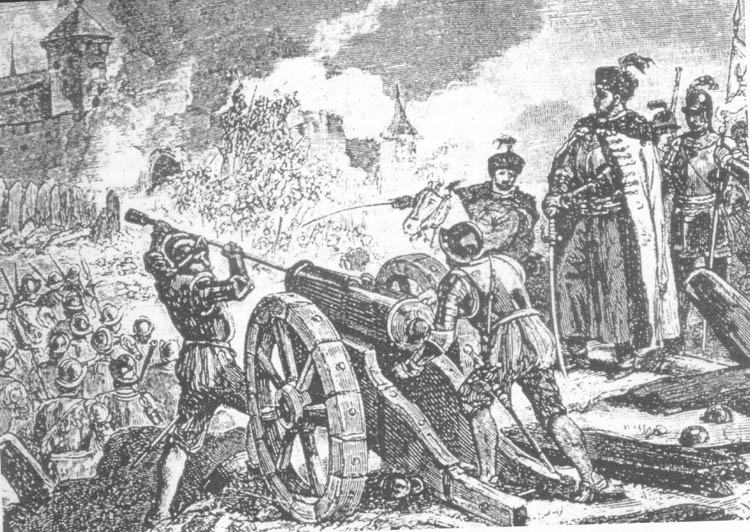 12. The Protestants employ their arms once again.
12. The Protestants employ their arms once again.
Enraged by the intransigence of the defense, the Swedes, losing all hope of any agreement, unleashed heavy attacks against Jasna Gora; but the cannons of the fortress did not permit them to get close to the walls.
13. The Protestants use fear and sympathy for the eighth time.
The seventh of December, vigil of the Feast of the Immaculate Conception, Piotr Sladowski, a Polish noble who had been arrested by the Swedes when he was returning from Prussia to this village, was sent to the fortress charged with pressing the monks to capitulate. But on the contrary, he encouraged them not to give up, saying that the invading armies had begun to suffer their first defeats, and that the continuous acts of violence of the heretic—pillaging the properties of the nobles, murders of priests, profanations of churches, violations of women—were stirring up great reaction in the country. All of these acts of violence were taking place, he added, with God’s permission and as a chastisement for those who were lacking in fidelity to King John II Casmir.
14. Two valuable hawkish reports
The following day, the Feast of Our Lady, one of the villagers of Czestochowa, disguised as a Swedish soldier; managed to reach the walls, and informed its defenders that the besieging army was about to receive six heavy cannons from Krakow to demolish the walls, plus reinforcements of 200 infantrymen; on the other hand, many Tartar troops were going to join King John II Casmir. He also threw in a letter signed by Fr. Antoni Paskowski, Prior of the Paulist Convent in Krakow, which described the atrocities committed by the heretics and recommended to the defenders of Jasna Gora that they not let themselves be deceived by the kind of words of the enemy for “among the Swedes nothing is sacred, neither faith, nor religion, divine or human; they are not accustomed to fulfill any agreement or political oath” (pg. 137).
A little later, a Tartar, who was permitted to come within the walls, after contemplating the sanctuary, surprised the monks with words of encouragement, urging them not to permit that “swine and perjurers occupy the place consecrated to the Most Pure Virgin.”
With all of these facts, noted Fr. Kordecki, the people under his command recovered their confidence and spirits, although they knew that Miller would soon receive six heavy cannons to batter down the walls.
15. The Catholics witness a clear intervention of Providence
While the ceremonies of the Feast of the Immaculate Conception were being carried out, a Swedish soldier who was returning from the village of Redzin, where he had blasphemed against the honor of Our Lady, fell struck by a cannonball coming from Jasna Gora, which was not aimed at him, but which ricocheted off the snow and hit him. Fr. Kordecki noted the fact, commenting that “he who insulted the eternal brilliance and glory of the Most Holy Mother of God, received a just chastisement at God’s hands, for he was unworthy to see the sun”(pg. 137).
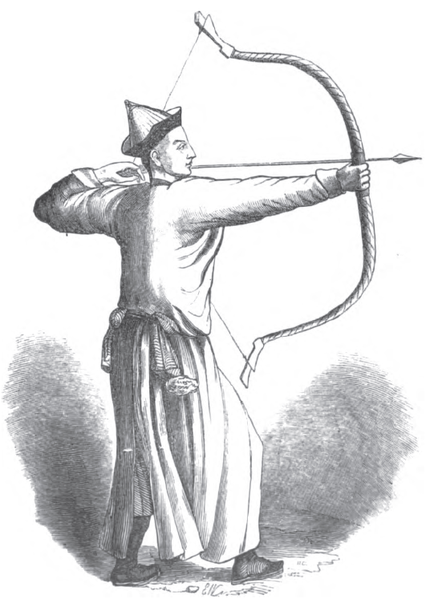 16. More armed combat than ever
16. More armed combat than ever
On Saturday, the heretics began once more to bombard the monastery, and on Sunday the bombardment took on such a fury, that it appeared that “hell itself was vomiting against the sacred icon.” The monks, however, as was their custom, carried out that morning a ceremony in honor of the Blessed Sacrament. After Holy Mass, the Most Holy Eucharist was carried in procession along the walls; Fr. Kordecki said that the balls passed close to the heads of the defenders, but that only after the termination of the ceremonies did they respond to the enemy fire. During that day, 330 projectiles fell upon the fortress, and three of its soldiers gave their souls to God.
About midday, the enemy ceased fire and sent a message asking if the monks had been convinced yet to accept the protection of the Swedish king. But the Prior was not in a hurry: he told them that he would send his answer the next day. Immediately, the Swedes renewed the heavy bombardment. The following day, the scene was repeated, and the monks responded once again: “such important matters must be pondered at length…” (pg. 140).
17. The Catholics witness another intervention of Providence
At that stage, the winter was becoming more intense, so the Swedish soldiers were led to light bonfires at night to protect themselves from the cold. However, by doing this they revealed their positions, coming under the direct fire of the defenders of Jasna Gora. And they quickly convinced themselves that, between cold and death, it was better to suffer the cold.
By this time already, the garrison was preparing itself for the assault which the enemy would launch, sooner or later, against the walls. They prepared clubs with nails sticking out of them, iron bars, beams and rocks with which to repel those who might reach the walls.
When the Swedes launched themselves in this first assault they were easily repelled, because their movements showed up against the snow and made them an easy mark for the defending troops.
Polish forces in Częstochowa
In the days that followed, a dense fog covered the Hill of Light, making it possible for the Swedes to move their great assault machinery closer, unperceived, while the great cloud was not cleared away by the supplications and prayers of the besieged. In view of this, the Prior selected one of the religious to “cry out for the help of God’s power against the spells of the enemy, to clear the darkened air with exorcisms, and bless the weapons of the garrison.” This turned out to be so efficient that it neutralized the efforts of the sorcerers, dispelling the darkness from the air, and once again their shots found their marks and the enemy fell, in spite of being protected by the abject help of the demon” (pg. 143).
18. New” third force” defections within the monastery
While the heretics continued pounding Jasna Gora, two Polish nobles had taken refuge there. Fearing that the fortress would be taken, one of them took two religious and the other his wife and small son. They had even obtained permission of Miller to pass through the line of fire, but Father Kordecki categorically prevented them from carrying out their intentions, so that such an act might not affect the morale of the defense.
This event, however, together with the insistence of the enemy attacks and the death of a youthful member of the garrison, influenced the spirit of some of the monks. In a state of continuous fear, they urged surrender, arguing that, if Providence, in whose hands is the power to lose thrones or to put them in other hands, had delivered the Polish Crown to the Swedes, it did not behoove them as monks, to oppose themselves to the will of God, but to accept it, all the more so since the enemy had promised to guarantee the Faith and freedom of worship…
When such insinuations became more frequent in the meetings of the Congregation, the Prior called them to order, fraternally enough, but also with energy: “…what Faith is ours,” he bellowed, “what love, what gratitude to God Who is so generous to us—that such small damage to our earthly comforts is able to turn us away from the guard and protection of the chest containing the celestial treasures of the eternal King? Let us consider that it is far more prudent for us to defend the integrity of the House of God, the Holy Faith and at the same time our own liberties, than for us to lose all and, in addition, to go into exile and eternal slavery.” (pg. 146).
19. Another “hawkish” report
A letter, signed by a noble, was found in the moat around the walls. Friar Kordecki considered it a grace destined to revive the hopes of those who had become intimidated. The letter reported the movement of the Tartars coming to the aid of king Jan Kazmierz. This news really encouraged the defenders.
20. The Protestant aggression grows more intense
After trying an assault on the north side, the heretics then tried to demolish the walls on the south side, by means of an intense bombardment. They also fired against the sanctuary itself, trying to weaken its walls.
Painting by Franciszek Kondratowicz
21. The “third force” within the monastery carries out the ninth fear-sympathy binomial
Some of the nobles who had taken refuge in the monastery now went to the Prior and suggested that he come to terms with the enemy. “The enemy,” they said, “who has dominated the whole country, will not be intimidated by the resistance of his last focus. We have no prospects of receiving reinforcements. So, why not accept an agreement with the Swedes while our situation is still good?” (Friar Kordecki does not mention names, but it appears clear that those “doves” were from among the number of those ignominious nobles, who sought refuge in Jasna Gora, but refused to take up arms, in order not to “compromise” themselves… There is a note about them at the end of this work).
Friar Kordecki answered them: “…but the enemy will not concede all that we demand; we desire (above all), that the place consecrated to the Virgin Most Pure never be stained by the impious feet of the heretics. You, dear sirs, overcome by adversities, desire to reach an agreement so that, relieving yourselves of the unhappiness of the siege and the discomforts of the war, you will then be able to enjoy a pleasant peace without any worries. Do you think that, if we surrender, you will be free from all the adversities of war once you have left the cloister?… The capitulation will become for you, then, a spring of misfortunes and defeats; but if, on the contrary, bearing the slight inconveniences, we overcome the obstinacy of our enemies with the help of God, then we shall surely win a stable peace.” Peace through intransigence (pg. 148).
22. Pressure from the Protestants for the tenth time
One day, Miller’s soldiers discovered a number of silver objects belonging to the sanctuary, which had been hidden at the bottom of a tank when news of the advance of the Swedish troops toward Czestochowa first arrived. As proof of his “respect” for the holy place, the leader of the heretics offered the silver which had been found, promising to add some of his personal jewels, if the monks only agreed to place Jasna Gora under the “protection” of Charles X Gustav. The Prior responded immediately: “As to the return of the silver objects, we accept the General’s gracious offer, but do not accept the condition which was proposed to us: because the glory of God and the protection of the sacred things is more important for us than all the treasures in the world” (pg. 150).
23. A notable victory of the Catholics
The 20th of December, Sir Stefan Zamoyski, in broad daylight, at one o’clock in the afternoon, sallied forth on horseback with a group of soldiers, and moving through the moat, and then through trenches which the enemy was digging toward the walls, took some advance detachments of the besieging forces by surprise, killing several soldiers and destroying two of their cannons. They retreated into the monastery under cover fire from the walls. In this incursion, Zamoyski lost only one man. The Swedes suspended their attack for two days, in order to take care of their dead and wounded.
Painting by Johann Philipp Lemke
Perhaps fear also led Miller to stop the fighting, comments Friar Kordecki, for the news went around that, when the general was offering a banquet for his officers, a cannonball fired at his tent, went through the wall and destroyed the table, causing all the guests to leave hurriedly, without even saying good-bye.
24. Within the monastery the supreme pressure from the fear-sympathy binomial
On the third day, the defenders of Jasna Gora identified on the horizon the wagons loaded with gunpowder, and the heavy guns coming from Krakow, to reinforce the besieging army. Then, once more fear dominated the besieged and many of the nobles tried to convince the monks to surrender. While debating about the new situation, the religious reached contradictory decisions. “The power of the enemy, the lack of reinforcements, the atrocious fury of the heretics, the loss of their possessions, the damage done to the Holy Place,” all this came to the mind of the monks. In the pressure of the moment, so did the sophisms: “Those who were attached to their lives and were eager for peace, wanted to come to an understanding with the enemy. They were saying: ‘It is not right for a religious, who has renounced the world and consecrated himself to the spiritual service of Christ, to take up the sword and shed blood; he should rather forget such things and dedicate himself to his own salvation, and if we are going to have to surrender to our enemy for lack of food, isn’t it better to do it now, so we will avoid increasing his anger by our delay?” (pg. 155).
The older monks, however, were of the opposite opinion, and they managed to make their counsels prevail. After expounding some of the reasons why resistance ought to continue, they urged everyone to wait for the arrival of reinforcements and trust in God’s mercy, “because once we give in to the enemy, there will be no way to correct our error” (pg. 155).
“Undoubtedly, if the Supreme Judge disposes that our Fatherland recover its ancient grandeur (and this we cannot doubt), the thrust of its liberation must come from Jasna Gora,” for, since Our Lady has been pleased to be called Queen of Poland, She has made Jasna Gora the capital of Her Kingdom. Whence it follows that Jasna Gora is “the fountain of the graces which God will pour out over souls, curing them of their internal weaknesses, whence also will flow the strength and health of the whole body of our Fatherland. That most glorious Lady will extend her hand once again – (which she withdrew, on account of the inscrutable designs of God) to the defense of our unfortunate Fatherland, and raise it from its defeat; so that we may understand that the Kingdom of Poland will recover its ancient grandeur only through the generosity, power and protection of its Queen” (pg. 156).
Swedish siege of Jasna Góra in 1655. 17th century painting. Notice the bombardment of the Monastery.
With the new heavy guns and the assault carts which he had received from Wittemberg, Gen. Miller prepared himself for a second assault, and, as usual, he sent a message to the monks proposing peace, and threatening to discharge all his hatred over the Holy Place, if his proposal were refused.
As was his custom, Friar Kordecki answered amiably asking for time “to consult his superiors”: only then…”shall we do what seems suitable.” He also asked a truce for the morrow, as it was Christmas Day.
At the same time, the Prior wrote to the Count of Wrezczewicz, requesting that he intercede with the general to obtain a truce for Christmas. His purpose in this was to mislead the Swedes as to the morale of the besieged garrison, and to gain time, which would be particularly precious now, in light of the news that the King had begun to advance with his troops.
But Miller responded immediately through the treasonous Count; he would grant a truce only on the condition that he receive, that very night, a message from Kordecki agreeing to surrender.
This time the Prior of the Paulines decided not to answer: and the religious spent Christmas night awake: some watching on the walls, others encouraging the garrison; but the majority prayed in the church.
25. The Protestants launch yet another attack
A more intense movement in the enemy camp, more numerous campfires presaged something menacing for that night. God, however, did not permit the heretics to pour out their fury over Jasna Gora, until the following day, after the end of the Catholic ceremonies in the sanctuary.
At noon on the 25th, the massive attack began. “The cannons to the north thundered, and the balls struck the walls of the cloister with such force that in many places they went right through them, flying and bouncing around amid the debris and dust that they scattered in the corridors and stairways, and causing such fear among its residents that no one had the courage to look out the window. Now the enemy hurled torches wrapped in hemp, soaked in pitch, and studded with brimstone and sulfur. They scattered a terrifying fire, principally those that came in iron tubes, so that they vomited fire and lead on all sides. They were similar to grenades, but since the majority of them fell outside of the Cloister, or in its interior patio, they did not do any damage” (pg. 162-163). The most dangerous projectiles after all, were the iron ones with lead in their bellies which on exploding, scattered pieces of iron in all directions.
Painting of the Tartars by Artur Grottger
“At nightfall, finally, one of the heavy guns which was doing the most damage, burst, putting an end to the attack. It was said everywhere, and heard from the Swedes themselves in the camp, during the siege, as well as in other settings, that the cannon balls fired against the cloister frequently bounced off the walls and, returned to the Swedish camp with great force. When many doubted this, the respectable Piotr Okrasa, who Christmas day was delivering provisions in the camp of the besieging troops, affirmed categorically that is what occurred with the last shot of that canon and that in the midst of an unusual fear, they were saying in the camp that by the force of the projectile, which had bounced back from the wall, the cannon was destroyed and its gunner killed. He (Piotr Okrasa) said that this seemed to him to be true, for the projectile which was then carried about through the camp, had the characteristics of a true Swedish cannon ball—t was larger than any of those in Jasna Gora. There is not the slightest doubt that, from the moment in which that cannon was blown up,The roar of the cannons was no longer heard-neither on that day, nor on those that followed—thus it seemed that a great and miraculous power, contrary to the enemy, put an end to the siege of Jasna Gora, for the Swedes had all the ammunition they wanted (pg. 164).
26. The eleventh and supreme pressure of fear and sympathy
At dusk General Miller once again wrote to the Pauline monks. It would be his last proposal, his last threat. After regretting the intransigence of the defenders of Jasna Gora, he offered them two alternatives: either they would hand the fort over to the Swedish troops on that very day, or, swearing on oath of fidelity to Charles X Gustav, they would pay an indemnity of 60 thousand talars to the besieging troops, after which the siege would be lifted. If the offer was refused, however, he threatened “to reduce to ruins and ashes all the villages and hamlets located within a radius of three miles, and to hand over all the properties of all the nobles who were resisting in Jasna Gora to be sacked, burned and totally destroyed…” (pg. 165).
On the following day, the 26th of December, the Father Prior responded to the Swedish General: “It is a shame, but now we have no means to pay the ransom you ask!But you, sir general, know that we are not rebels, for we are not against the monarchy…”
The chainmail of King John II Casimir Vasa, located at the Polish Army Museum in Warsaw.
At the same time, he wrote to the Count of Wrzeszczewicz, but in other terms: “On account of former benefits which Your Excellency has conceded to this sanctuary, your life has been spared various times during this siege; but lower thy head, do not abuse the patience of God!”
27. The supreme refusal of Friar Kordecki: the definitive victory of the convent
On that day, according to the custom, the defenders continued the commemorations of the Nativity, with chants and ceremonies. But the Swedish troops thought that it was the celebration of some victory, and began to abandon their positions in their consternation. The officers recognizing what was really going on, concluded in their turn, that the besieged forces must be very well provisioned, in victuals and in munitions, to permit themselves such festivities. In fact, the provisions were already at their end…38 days of siege had gone by.
“In the obscurity of the night, the heavy guns were retired from their positions; in the early morning the commanders of that numerous army withdrew, each in his own direction. Miller went to Piotrkoy, the Count of Wrzeszczewicz to Welum, Sadowski to Sieradz, the Saxon Prince to Krakow” (pg. 168).
III. INTERVENTIONS OF OUR LADY
WHICH THE PROTESTANTS SAW AND THE CATHOLICS
DID NOT SEE: OUR LADY, THE GREAT VICTOR
“How could it have happened that only 70 religious (absolutely non-combatants) should have felt such strength within themselves, that with five nobles and their few servants, plus 160 infantry men, the greater part of them villagers, that they dared to resist such a numerous army, if God Himself, protecting that place consecrated to the glory of his dear Mother, had not inspired this determination in the religious and had not infused courage amidst the general fear? Because, although sometimes they lost hope, whenever, after praying, they assembled in the refectory and each one was consulted, all voted unanimously that they would prefer to fall suffering the most terrible of deaths, rather than permit that the infamous Swede stain with his feet the place consecrated to the Most Pure Virgin” (pg. 170).
St. Paul the Hermit
1. So that no man may boast…
“God Himself disposed things in such a way, that among the mountains celebrated for their miracles, might also be numbered this Hill of Light of Poland, defended by a special mercy of God, obtained by the Most Holy Virgin; so that no man may brag of having saved it, or at least repeat proud and boastful phrases: it was our hands that did this…”
2. “A Lady of a menacing countenance…”
“According to the testimony of our enemies themselves, it is manifest that Jasna Gora was defended miraculously and successfully, because Lord Grodzicki, Commandant of artillery of H.M., and others, revealed that Miller said in the encampment that the only motive which lead him to raise the siege of Jasna Gora was the word and the menacing face of a noble lady, who appeared before him, leaving him perturbed. Whence the report was spread about among the Swedes that Miller lifted the siege because he was deceived by a maiden at the service of the monks. What was said among the people, however, was that the general was severely warned by a lady who appeared to him, to raise the siege, under pain of the complete loss of his army” (pg. 172).
The letters of the Dominican nuns of Piotrkow to the sisters who were then in Jasna Gora are in accord with this description, they contain, among others, the following facts: “Miller observed with great attention, here in the church, the picture of Our Lady of Czestochowa, and since his interpreter asked us to give him a small copy of the image, we gave it to him, and Miller took it from his hands. Thus it became clear to us that Miller wanted to find out if the vision he had at night was similar to the picture.”
The same religious of Piotrkow later told the Most Rev. Provincial (under whose jurisdiction is also the convent of Czestochowa), that Miller, after he took the picture from the hands of the interpreter, said the following: “It is absolutely not comparable to that virgin who appeared to me; for it is not possible to see anything comparable on earth. Something of the celestial and divine, which frightened me from the beginning, shone in her face.”
I return to the letter: “The Swedes themselves affirmed, that some of them saw a Lady on the walls, pointing the cannons and furnishing with her own hands, the necessary arms to the defenders who were in the trenches; and to whose who were tunneling in the rock (the mount is based on a rock, and the Swedes were excavating tunnels toward the walls) toward the walls there appeared a venerable old man, who counseled them to give up their useless labor, for not even in seven years would they manage to carry it out. Crushed then by these apparitions, they gave up the siege.” This was also heard from the Swedes by Sir Aleksy Sztrzalkowski, who told it to the monks, on his word of honor.”
Queen Jadwiga Jaroszewsha
“Lady Jadwiga Jaroszewsha also told that she saw the figure of a venerable old man, who encouraged her with the hope that God would in brief manifest His mercy, and the enemy would raise the siege of Jasna Gora. In that vision, a friar (who called her by the name), in a white habit, celebrated Mass at an altar located in a corner to the right, on the east side of the Church. We could not consider the old man as any other than St. Paul (the first hermit and our Patriarch), to whose honor this altar is consecrated. Sirs Jan Wiechowski and Maciej Wegierski of the Polish nobility, testified that they had heard the Swedes telling how they had seen an old man beside a Lady, who appeared on the walls and beat back the Swedish projectiles.”
3. “She obliged us to cover our eyes and bow our heads
“So also, Father Blazej Wadowski, Prior of Weiruszov of our Order, stated under oath that in the house of a citizen of Wieruszow invited by the Swedish commanders, Jorge Eichner and Arens Lukman to eat with them they heard such blasphemies from the mouths of the profaners as: “What witch is this that is to be found in your cloister of Czestohowa, who covered with a blue mantle sallies from the cloister and walks along the walls, resting from time to time on the bastions – and whose sight makes our people drop with terror, so much so that, when she appears, we have to turn our faces to the ground and protect our eyes?”
“Other military chiefs who were then seated at the table confirmed this. Some of them added moreover, as if they were vomiting it: “Your monks are perfect sorcerers. Look how they bewitched one of our companions so that, from the moment in which he fired against the church, he has his arm stuck straight out, and it is impossible to lower it or bend it in any direction; what is more, his whole body is as it were paralyzed, making it impossible for him to sit or dismount from a horse, so we had to send him to Leszno with his arm extended, in the position in which he was when he pointed the carbine, because he was a useless burden to us.”
“The Prior cited above added that, whereas before the Swedes arrogantly spread blasphemies against the Most Holy Virgin, now, after the withdrawal from Czestochowa, they have become more bland and no one has heard anything like that from their lips” (pg. 173-174).
Cannonball from the time of the siege of Jasna Góra by the Swedish army, stuck in the wall of the Basilica.
4. “…and pointed a sword at the Swedish Camps”
“Sir Mikloj Bielawski, of Ruska, described the commentaries of the Swedes, with his own pen, for our perpetual remembrance, as follows:
“The soldiers of the division of Sadowski (a turncoat noble), who as a colonel of the Swedish army, returning from Jasna Gora, passed through my village, which is called Golina. When I asked, once, those who were quartered in my house, what had happened at Czestochowa, and if they had been successful in the siege of the Hill of Light, with such a numerous army, they answered: — that frequently there had appeared to them a person in a white mantle, who, coming out from the cloister, would point at the Swedish camp with a sword (here a line of the book is missing)… immediately would fall. We learned also from the very sentinels that forty soldiers, terrified by this awful vision, had lost their lives.”
“When this same noble was visited a second time by the soldiers they told him “that they themselves had seen a Lady vested in a white mantle; when two Silesian brothers by the name of Dudzicz, pointed their carbines at Her, part of the breech of the carbine of one of them was driven so far into his face, that it was impossible for us to remove it, the surgeon had to cover it; the other had his body paralyzed as if he were petrified; the Swedish army took him with them. “This account, they made under oath, and the aforementioned noble signed it and sent it to Jasna Gora.”
 “Sir Strzalkawaki, already mentioned before, an eminent and cultured man, a citizen of Greater Poland, testified that he also heard from many Swedes, that the Lady seen on the walls of the cloister terrified them by her bearing, as well as by the dense fog which enveloped the cloister, just when they were making the greatest efforts to take it. We have also been informed of this same fact by outstanding men and trustworthy citizens of Czestochowa, who heard such reports from Polish soldiers in the service of the Swedes” (pg. 175).
“Sir Strzalkawaki, already mentioned before, an eminent and cultured man, a citizen of Greater Poland, testified that he also heard from many Swedes, that the Lady seen on the walls of the cloister terrified them by her bearing, as well as by the dense fog which enveloped the cloister, just when they were making the greatest efforts to take it. We have also been informed of this same fact by outstanding men and trustworthy citizens of Czestochowa, who heard such reports from Polish soldiers in the service of the Swedes” (pg. 175).
“Many trustworthy nobles testified how they found the following fact among the commentaries of the besieging Swedes particularly noteworthy: “frequently (said the Swedes), when we were preparing for the assault of the cloister with siege guns, there would appear a fog, enveloped in this fog the mountain cast false shadows which tricked our vision – it would appear that the mountain with the cloister was raised high in the air, and when we aimed our cannon fire up there, the projectiles passed over the cloister without doing it any damage. Sometimes also in the midst of that dark fog, which confused our vision, we would see the cloister on top of a low hill; when our gunners, deceived by the shadows took the cloister as their target, as it appeared, the projectiles would fall close to the walls of the fortress and ricocheting on the frozen ground return at great velocity” (to the Swedish camp).
“I decided to add to the account of the siege of Jasna Gora some of these examples of miraculous facts, to show clearly that the hill of the Most Holy Virgin was defended and saved by the hand of God Himself,” writes Friar Kordecki (pg. 176.)
IV. THE PROPAGANDA OF THE SWEDES
The Swedes had a booklet published in Amsterdam which contained a fanciful description of the “conquest” of Jasna Gora and which they spread all over Europe prior to their withdrawal from Czestochowa. This description showed in detail what they would like to have done if they had in fact taken the shrine. Kordecki includes it in his Memoirs “For the shame of that subversive and impious people.” King John Casmir, who had received it from Paris, gave him a copy of the booklet. Under the title “Victory of the Swedish King, in which twenty thousand Poles fell and Czestochowa was destroyed,” the document reports falsely that Jasna Gora was taken and that Swedish soldiers “spared neither man nor woman and killed the monks and priests… and that the victors carried off as spoils even the silver picture frames form the church.” (Pg. 181).
V. THE JUST END OF A CENTRIST
The traitorous Count of Wrzeszczewicz, after having been defeated in battle in Lesser Poland, was later discovered by peasants and beaten to death with rods (pg. 186).
Interior of the Basilica of Jasna Góra
VI. THE INTRANSIGENCE OF JASNA GORA
SPARKS REACTIONS ALL OVER
Published with the “Memoirs” is the text of the document with twelve “demands” which the nobility presented to the invaders, right after they had entered the country, as a condition for their recognizing the Swedish King. The “demands” boil down to the following: Do not touch our possessions and guarantee us freedom of worship… Friar Kordecki merely reproduces the text of the document, without making any commentary.
For such a document to be valid, however, explained the Prior of Jasna Gora, it would have to be ratified by the Senate. There the chief influence belonged to the ecclesiastical senators, who chose exile rather than approve such an agreement.
The Archbishop of Gniezno, Primate of the Polish Crown and first Duke, sent out a call to all the provinces immediately after the fall of Krakow on the 17th of November, 1655, summoning all the nobles to unite around the legitimate king in order to fight against the invaders. His terms however, have neither energy nor Catholicity: “I hope that all will return to fight for our King and our Fatherland…”
On January 3,1656. The Primate announced to the nation an unexpected event: the Khan of the Tartars, entering the Polish territories, communicated to King John Casmir that he wanted to unite his armies with those of the Poles to combat the enemies of His majesty. “This is especially a work of the mercy and power of God,” continued the Primate, inasmuch as, while some Christians rejoice at our ruin and other refuse us any help or protection, He aids us by means of those who are outside the Church of Christ… Thus, offering His all-powerful right hand to those who had grown weak, He does not permit the Kingdom to disappear. (pg 204).
Despite the Primate’s summons and this encouraging support, the nobles did not respond until after the news of the victorious defense of Jasna Gora had spread all over Poland and had commenced to stir up a great reaction among the humble folk. Only then, on the 29th of December 1656, they formed the Confederation of the Nobility in Arms. The oaths they took, were like the following: I swear to do my duty “before God, my conscience and public law…”
VII. THE GLORIFICATION OF OUR LADY OF CZESTOCHOWA
Once the faithful forces had been gathered together, and so that the counter-offensive would have the greatest success, the King made his way to the Cathedral of Lviv in the company of the nobility and the people, and there, with the approbation of the Senate, solemnly proclaimed Our Lady of Czestochowa Queen and Mother of Poland, that is of the Poles, Lithuanians, and White Russians, the peoples who then formed part of the Polish-Lithuanian Crown. The act was carried out before the altar of the Most Holy Virgin in the following terms:
“Great Mother of God and Most Holy Virgin! I, John Casmir II, by the grace of Thy Son, the King of Kings, and by Thy Grace, I, the King, casting myself on my knees at Thy Most Holy feet, take Thee today as my Patroness and the Queen of my dominions, and I recommend to Thy special protection and defense, myself and my Polish Kingdom, The Nation of Lithuania, and the Principalities of Ruthenia, Prussia, Mazuria, Zmudzia, Inflanta, and Czernichow, as well as the armies of both nations and all my people.
Interior of the Basilica of Jasna Gora. Behind the rod iron gate lies the Image of Our Lady of Czestochowa.
” I cry humbly, from this pitiful and devastated state of my Kingdom, for Thy mercy and assistance against the enemies of the Holy Roman Catholic and Apostolic Church, and, grateful for the immense benefits conferred by Thee, I sense with the nation, a commanding desire to serve Thee zealously, and, in my name and in that of the administrators and of the people, I promise to Thee and to Thy Son, Jesus Christ Our Lord, that I will spread Thy glory though all the countries of our Kingdom. Finally, I promise and vow to obtain from the Holy See, since it is only through thy powerful intercession and through the mercy of Thy Son, that I shall obtain victory over our enemies, and particularly over the Swedes, that this day be celebrated annually, and forever, and consecrated to Thee and Thy Son, in acknowledgment of these graces, and I will dedicate myself with the Bishops of the Crown so that my promise be kept by my peoples.
“As I see, to the great sorrow of my soul, that all the adversities which have fallen upon my Kingdom in the last seven years—the epidemics, the wars, and other misfortunes—were sent by the Supreme Judge as a punishment for the groans and the oppression suffered by the peasants, I promise and vow, after the conquest of peace, in union with all the states, to use all means to free my people from all unjust burdens and oppressions. Grant, Oh most loving Queen and Lady, that I obtain the grace of Thy Son to do all that I propose, and which Thou hast inspired me!”
The people wept with emotion on hearing the words of the King, realizing that, from then on, the Blessed Virgin would be recognized as Queen of Poland.
VIII. POLAND SAVED AT CZESTOCHOWA
Immediately after their defeat in Jasna Gora, the Swedes began to lose their fervor, and defeated in battle after battle, they had to fall back into Prussia and lost the greater part of their units.
IX. OUR LADY OF CZESTOCHOWA GLORIFIED
IN THE EPIC OF JASNA GORA
“On Easter Sunday, a few days after the King’s arrival at Jasna Gora, a triple sun appeared to the south and at the same time there was seen a double solar crown, one of which moved through the air and enveloped the hill and cloister, the other turned upward with its high point toward the sun, touched the solar disc itself.
“It was beautiful to contemplate these celestial phenomena, for we considered them as symbolizing a victory and as a visible manifestation of the appeasement of Divine Anger. Just as the tragic signs in the setting sun of three years before foretold the cruelty of war and the immense bloodshed, so the clear brilliance of the sun now returning and the extraordinary crowns, seemed to all to announce the palm of victory and peace” (pg. 212-213).
“Poland, if thou fightest for Mary, thou shalt be terrible to the followers of hell.”
“Contemplate, oh Poland of posterity, what a great benefit was conferred upon Thee by the Mother of God, whose devotion thy Apostle and martyr Saint Albert, Archbishop of Gniezno, so zealously propagated together with the Roman Catholic Faith! Follow then the holy example of thy forefathers, for, if you guard your devotion to Mary, propagate it zealously, and defend it generously, you will attract even greater mercies and become terrible to the followers of hell! Let Christendom look and admire how courageously our Queen of Heaven and earth protects Her kingdom, and how efficaciously She sends aid to Her subjects, deprived of all human help! May the angel of the armies of the Lord, guardian of Poland, deign to move the heavenly militias to pay homage together with us to the supreme majesty of God for such great benefits and may He, with His powerful hand, disperse all the enemies who ally themselves in order to eradicate from Poland devotion to the Queen of Angels!” (pg. 213).
* The expression “third force” is employed here to refer to those who neither side with nor openly fight against the Catholic position. However, their unprincipled, opportunistic, compromising and conciliatory attitudes favor the enemies of the Catholic Church. “He who is not with Me, is against Me” (Matt. 12:30; Lk. 11:23).
1 In Poland, the Primate was the First Duke, and when the throne was vacant, he assumed the Regency of the kingdom.
Short Stories on Honor, Chivalry, and the World of Nobility—no. 129

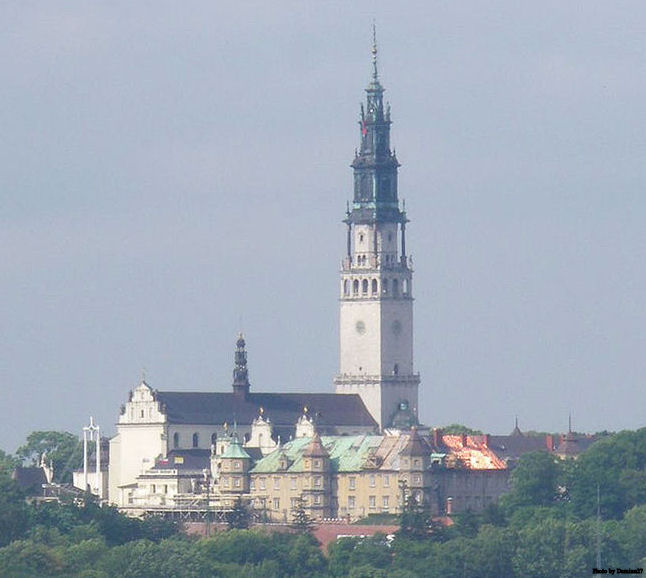

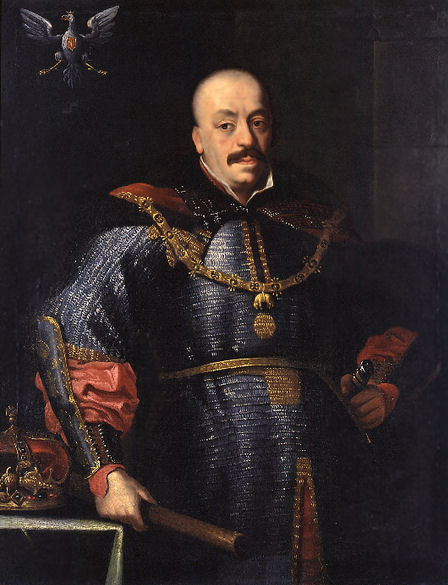
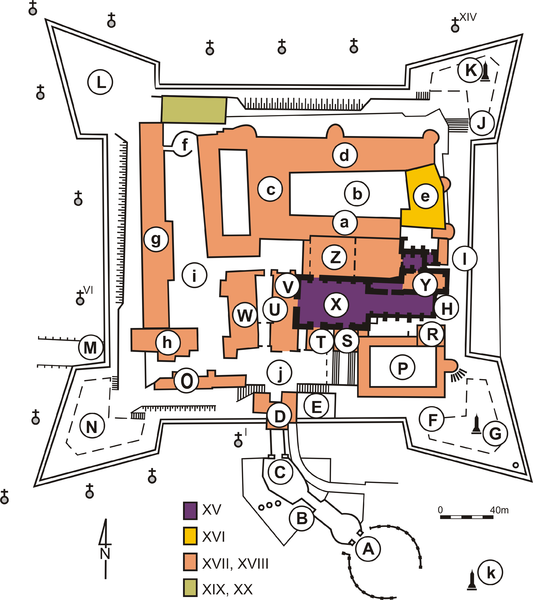

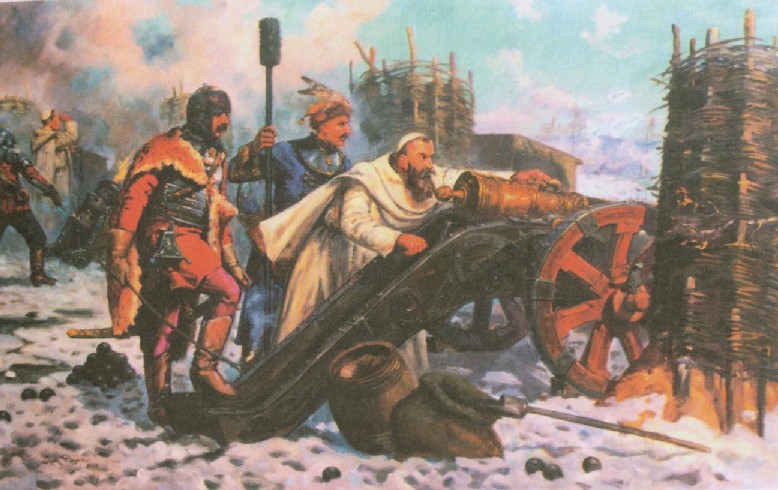
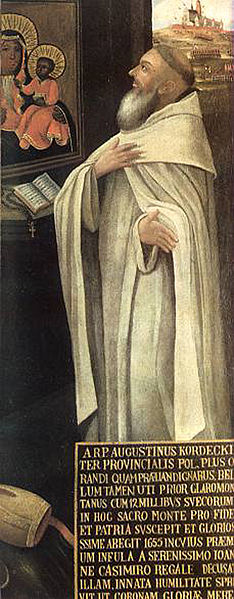
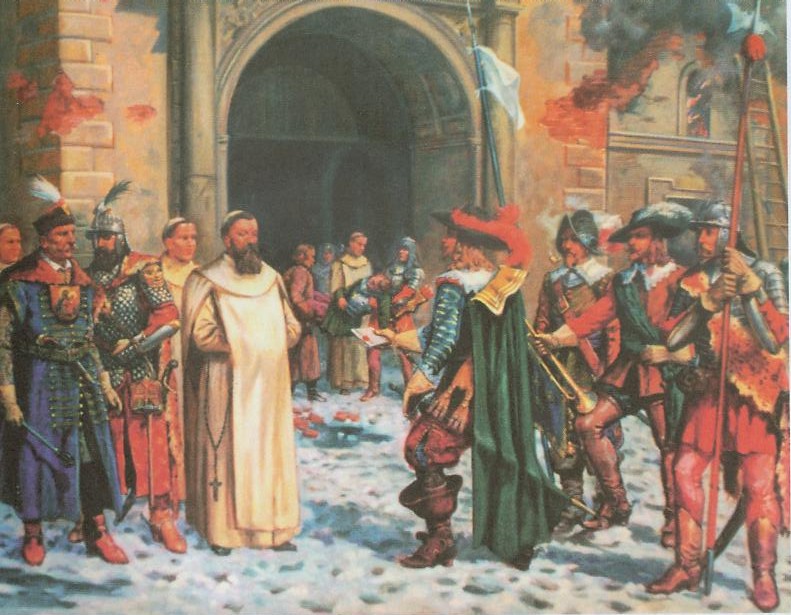
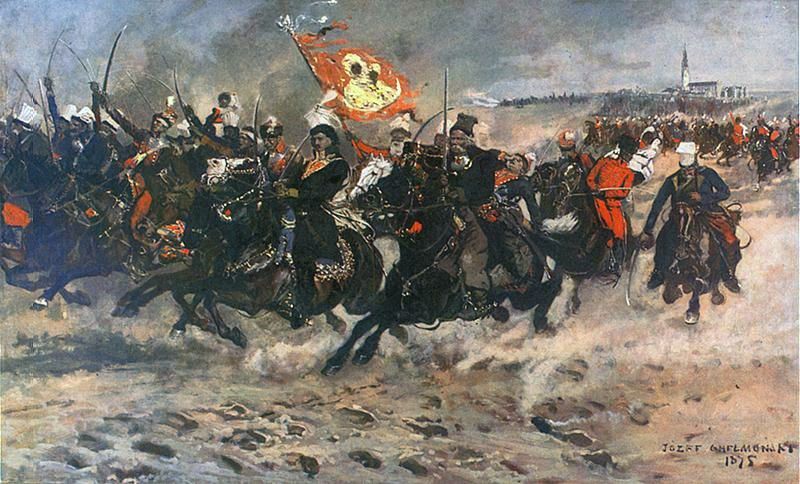
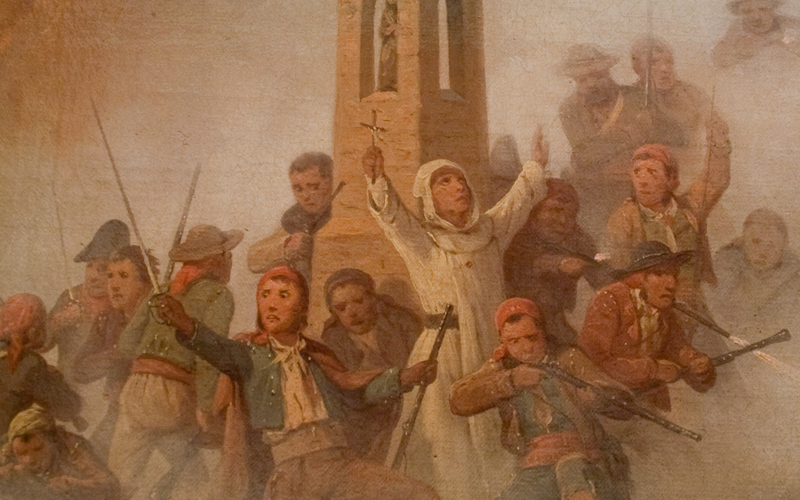
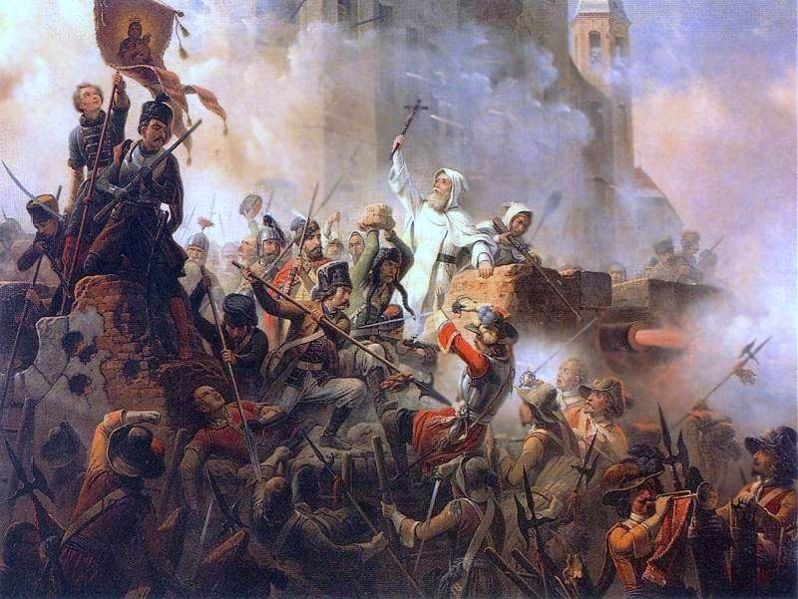
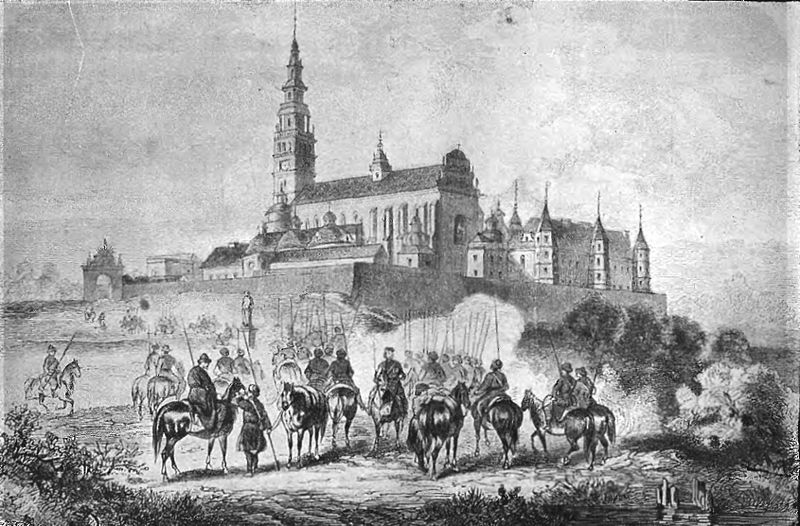

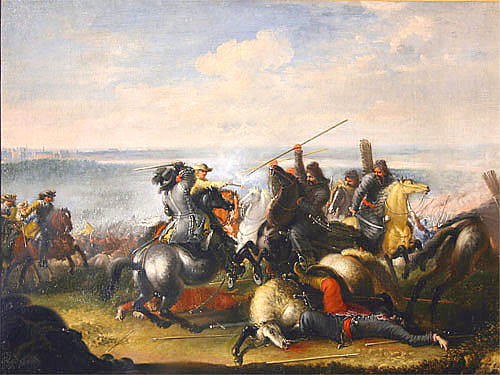
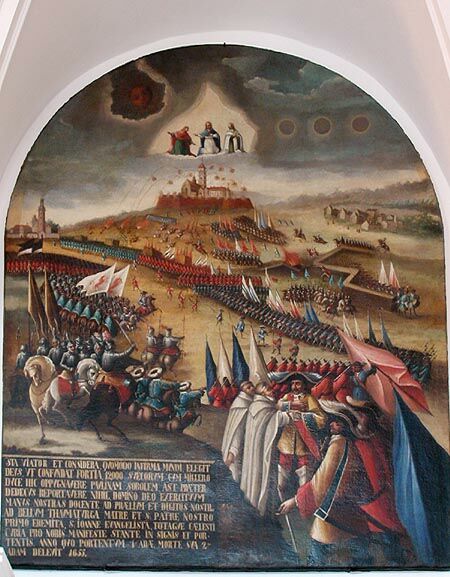
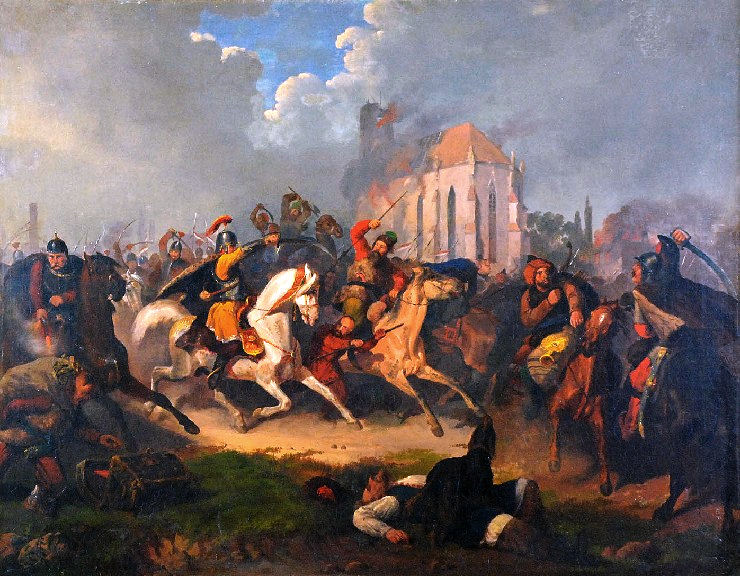
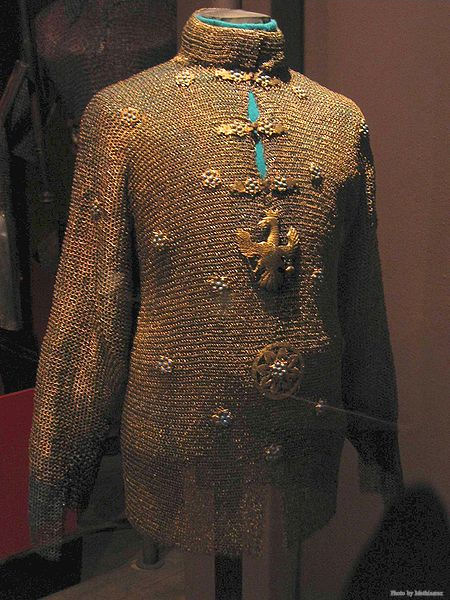
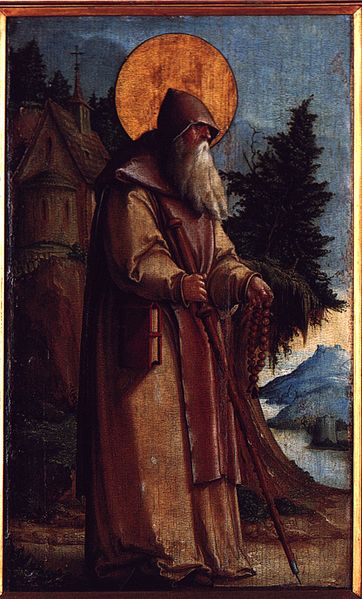
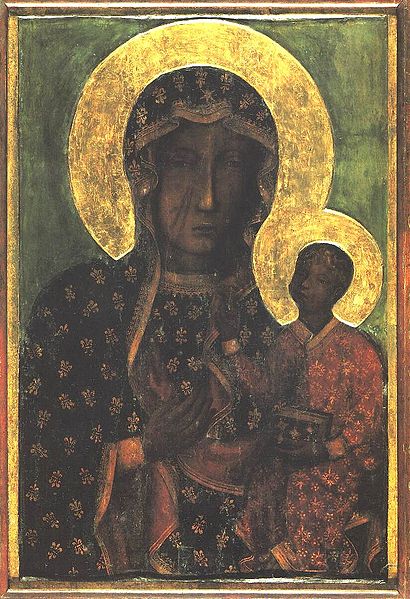
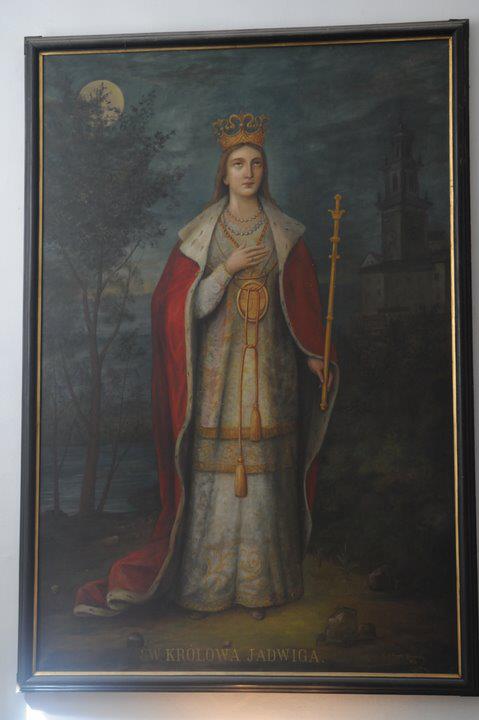
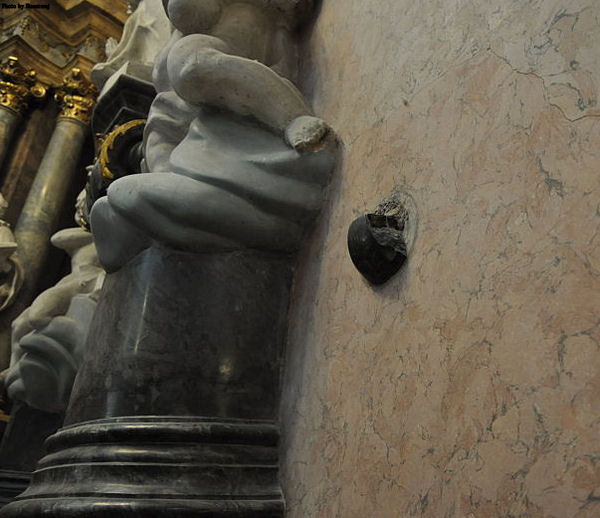
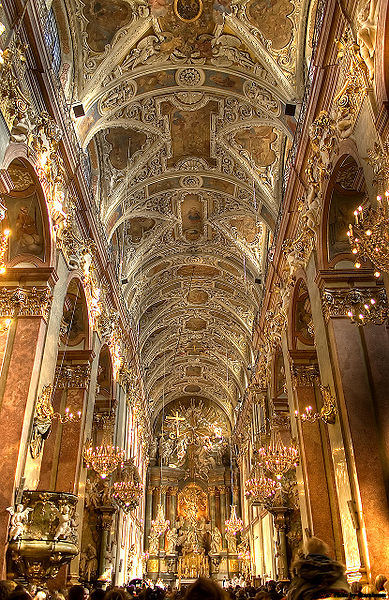
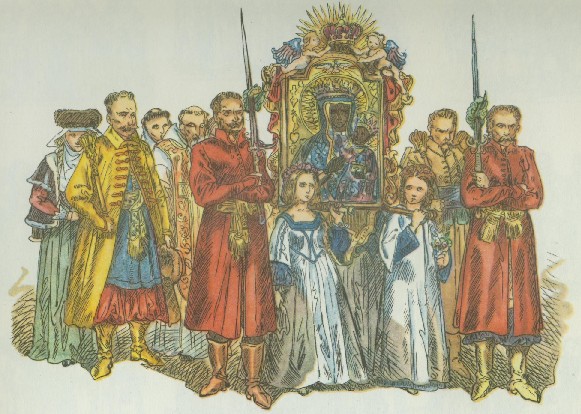
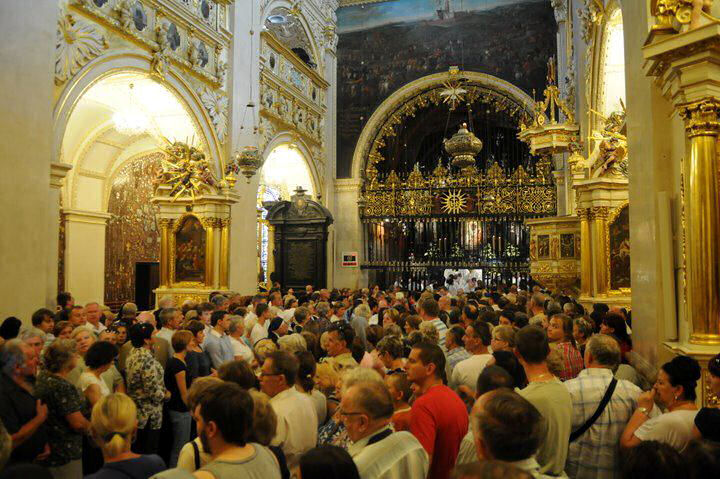
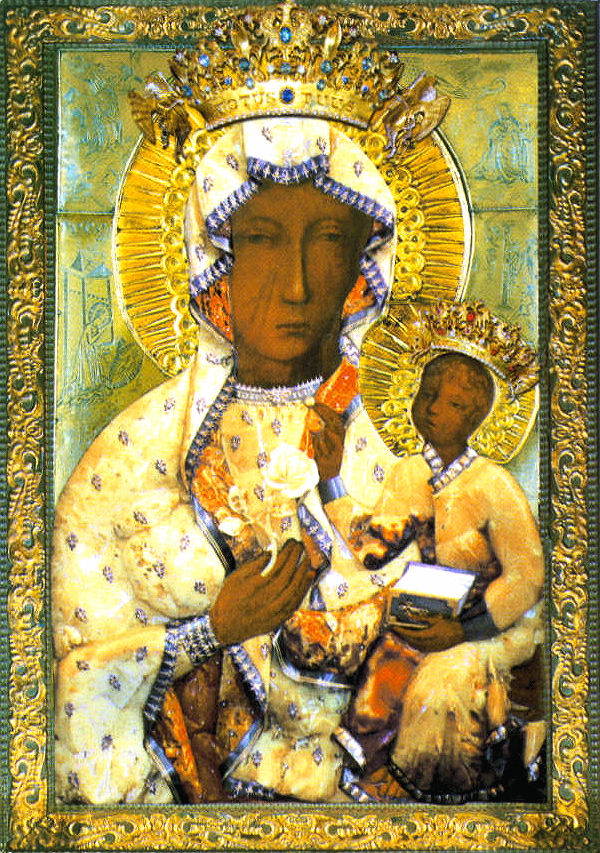
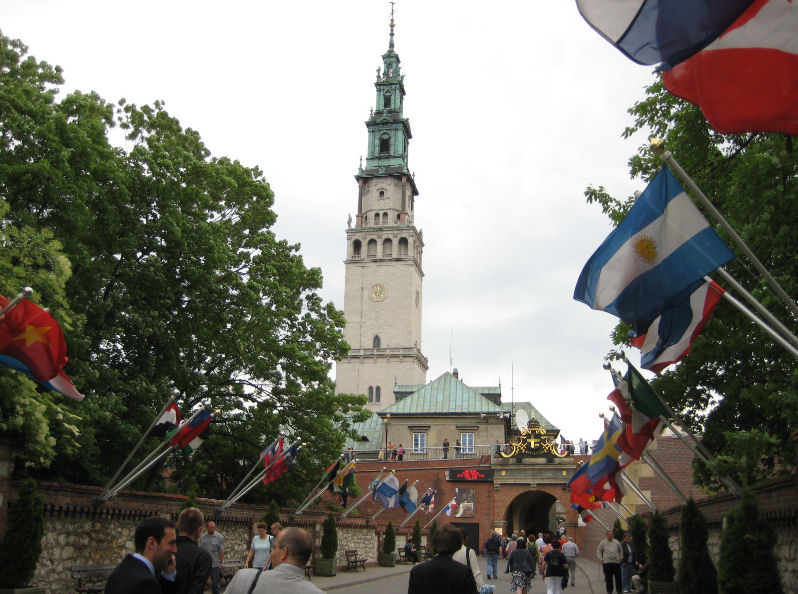
No comments:
Post a Comment